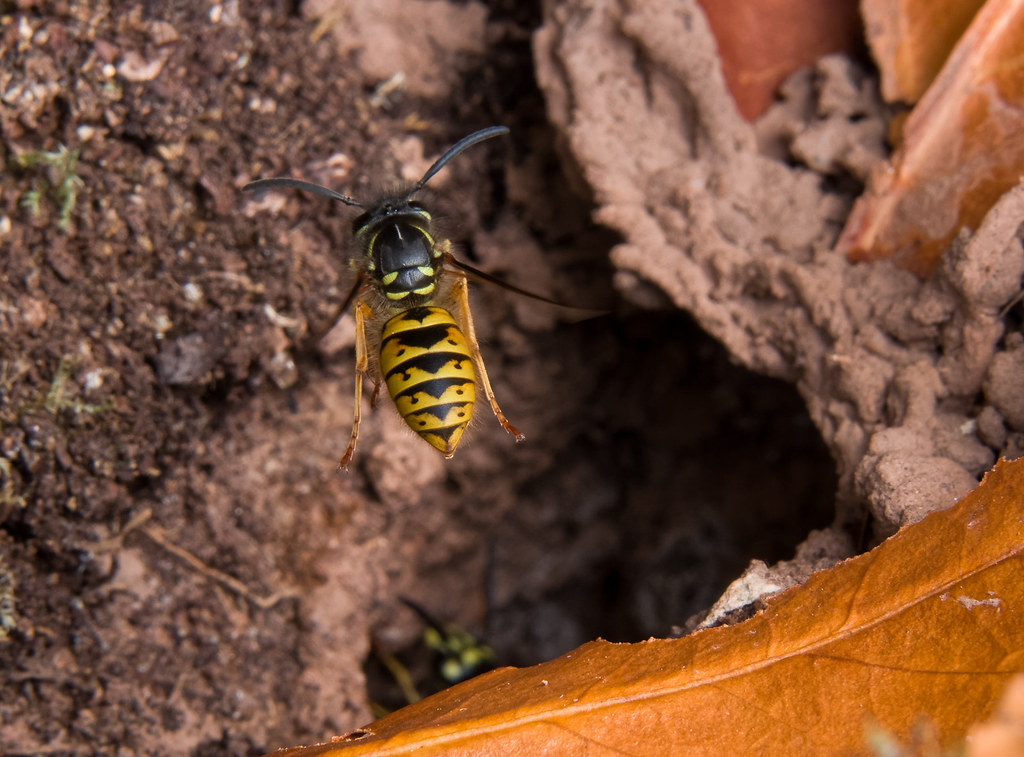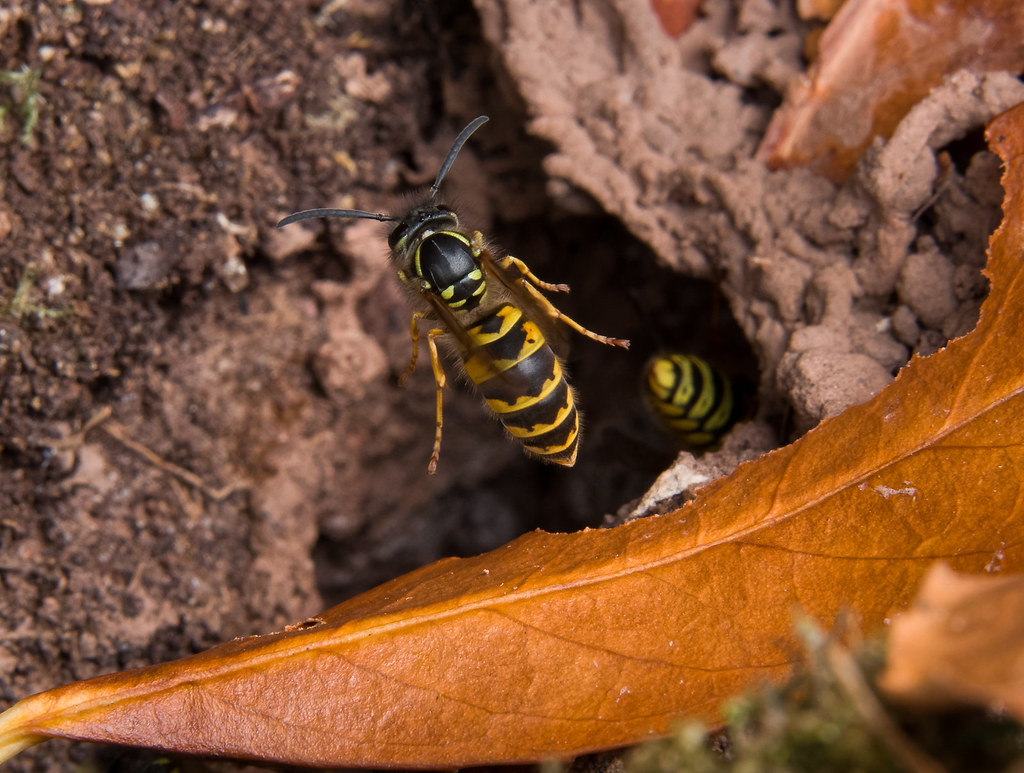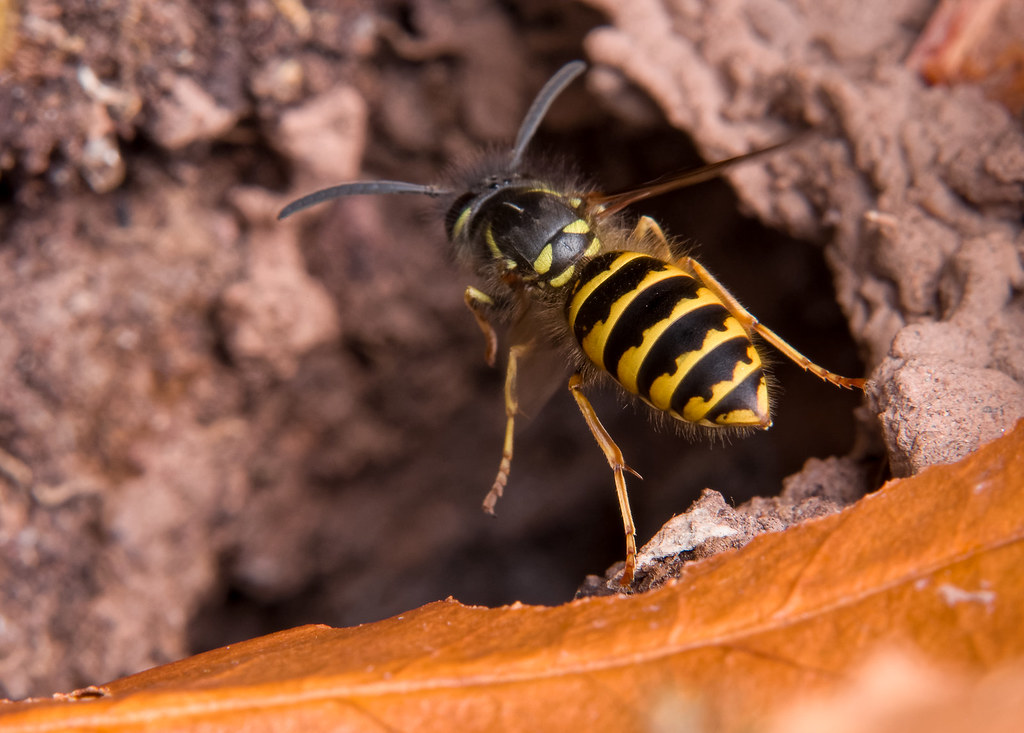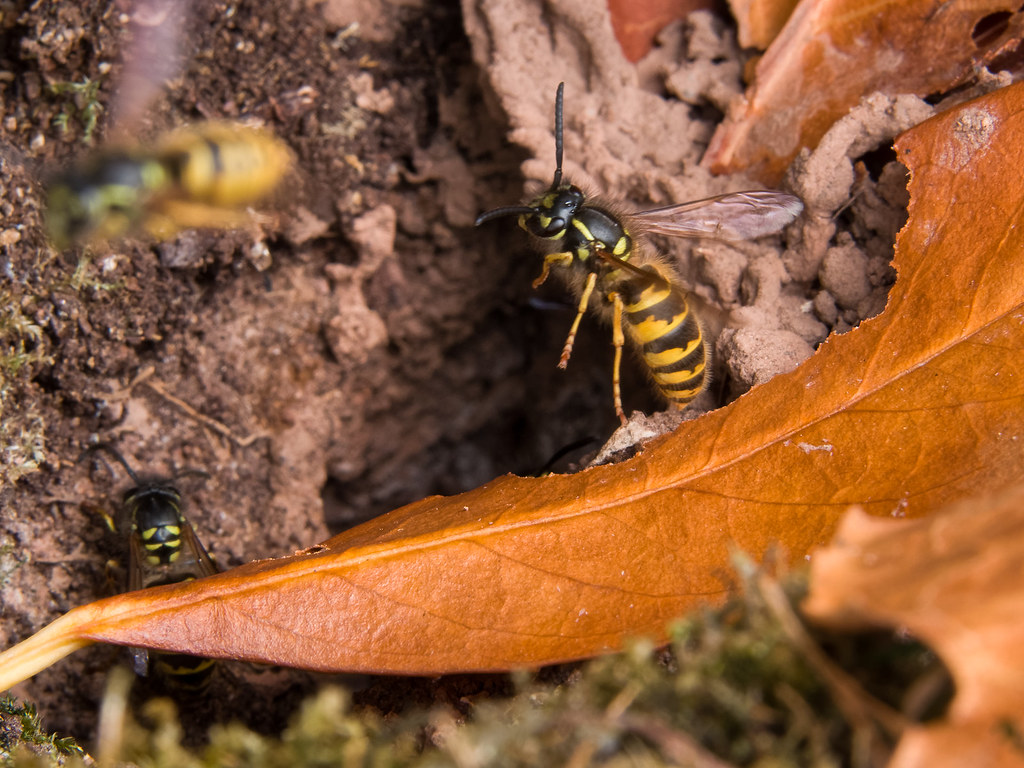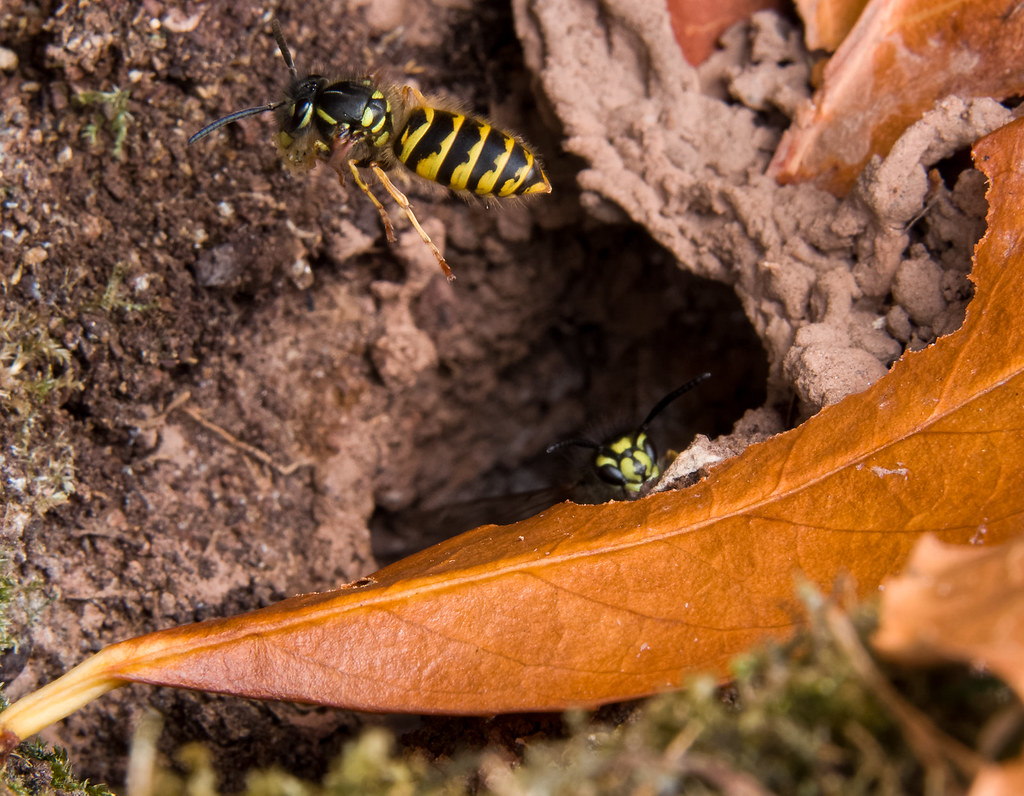GardenersHelper
In Memoriam
- Messages
- 6,344
- Name
- Nick
- Edit My Images
- Yes
Last August in this thread and this thread I posted images of activity around a wasp's nest in our garden. Those were captured using the Canon 500D close-up lens on my Panasonic FZ200 and G5 and Canon 70D. Trawling through my backlog yesterday I found some more images of activity around the nest. They were captured using more powerful (and for these subjects more difficult to use) close-up lenses, 4 using the Raynox 150 and 12 using Marumi 200. All but one were captured using the FZ200, the other one with the G5.
At +5 diopters, the Marumi 200 is almost exactly the same power as the Raynox 150 (4.8 diopters). However, the Marumi 200 has a much larger diameter than the Raynox 150, which means that it vignettes less (hardly at all in fact) at shorter focal lengths and therefore can cover a much wider range of (low) magnifications than the Raynox 150, which suffers from heavy vignetting at shorter focal lengths. This makes the Marumi 200 very attractive to me in principle, and I used it intensively for several days and confirmed that the extra range of magnifications is very useful in practice. However, I then did a controlled side by side comparison between the Marumi 200 and the Raynox 150, which showed that the Marumi 200 was significantly less sharp than the Raynox 150 and significantly more prone to chromatic aberration (for example see this post.) As a result I haven't used the Marumi 200 since then.
Still, while the Marumi 200 shots might not be as sharp as they would have been with the Raynox 150, I thought they were interesting enough to post anyway.
The Raynox 150 shots are #1, #2, #6 and #7. The Panasonic G5 shot is #8.
All of the shots used flash. Some used my pie tin flash on Metz 58-AF2 flash unit, and some were early shots using the KX800 twin flash (I don't know what diffusion arrangement I used).
All of the FZ200 shots used base ISO 100 and minimum aperture of f/8. The G5 shot used ISO 400 with minimum aperture of f/22. The reason a higher ISO was used with the G5 is that the G5, having a larger sensor than the FZ200, needs a smaller aperture to get the same depth of field, and that in turn needs more light from the flash. So to avoid excessively long recycle times with the G5 I turned up the ISO so as to reduce the output needed from the flash.
All but two of the FZ200 shots used 1/1600 sec, the other two 1/640sec (don't know why). The G5 shot used 1/160 sec, which is the max flash sync speed of the G5.
The images were (initial, batch) processed in DXO Optics Pro 10 and then (individually) processed in Lightroom 6.
As usual there are 1300 pixel high versions over at Flickr
The second post is all in-flight images.
1

0808 01 2015_08_xx FZ200 R150 P1050096_DxO LR 1300h by gardenersassistant, on Flickr
2

0808 02 2015_08_xx FZ200 R150 P1050098_DxO LR 1300h by gardenersassistant, on Flickr
3
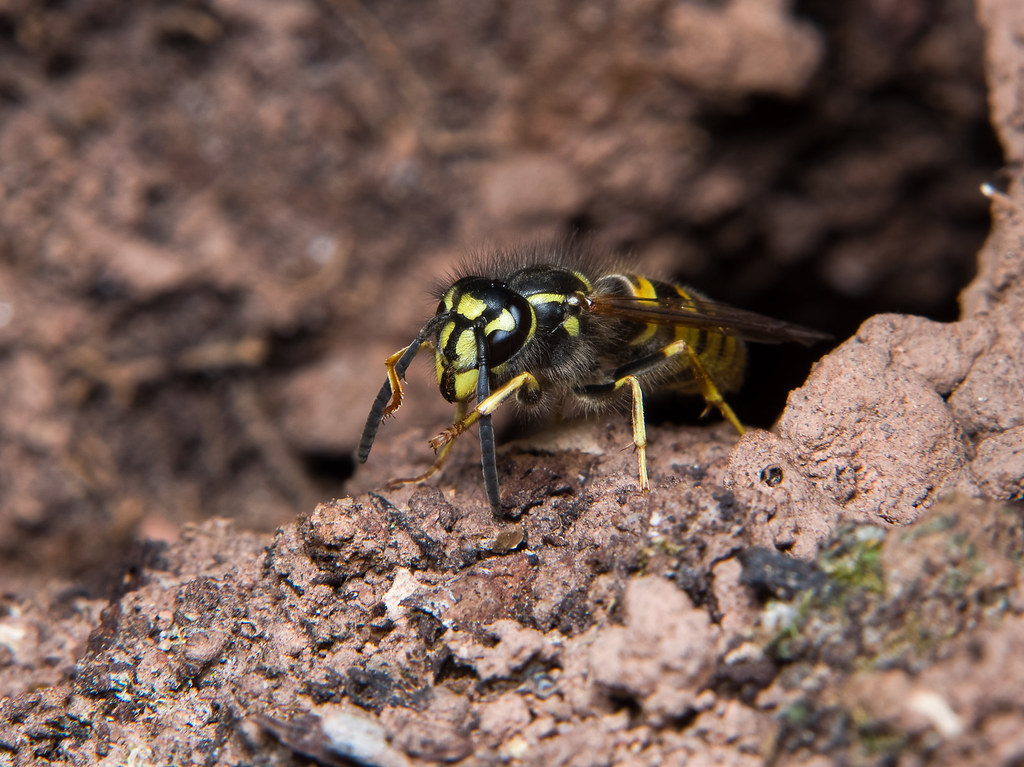
0808 03 2015_08_xx FZ200 M200 P1060110_DxO LR 1300h by gardenersassistant, on Flickr
4

0808 05 2015_08_xx FZ200 M200 P1060095_DxO LR 1300h by gardenersassistant, on Flickr
5

0808 07 2015_08_xx FZ200 M200 P1060214_DxO LR 1300h by gardenersassistant, on Flickr
6
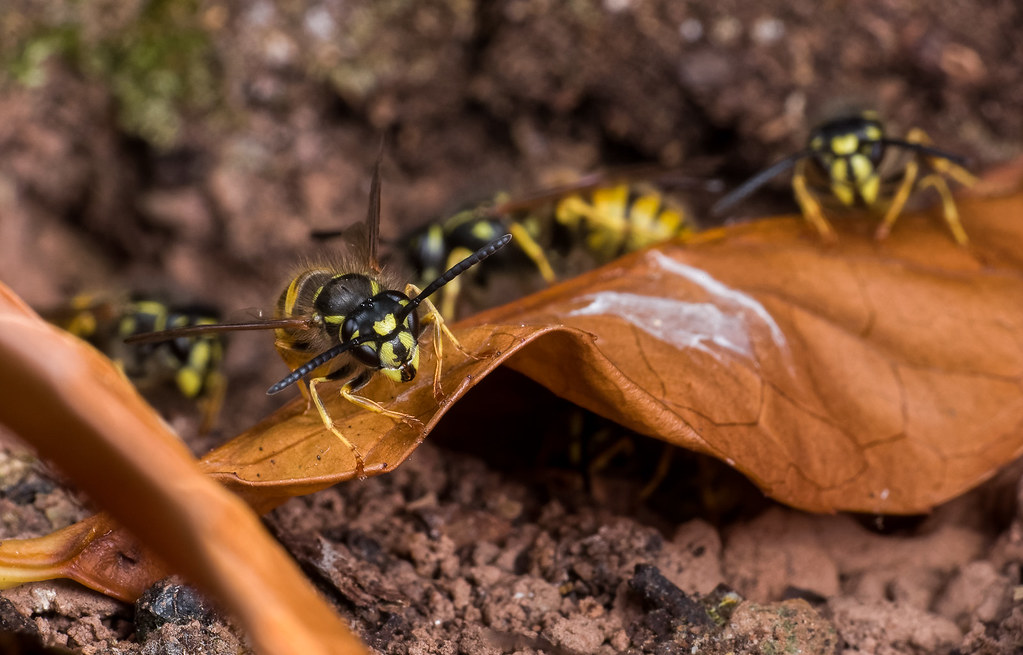
0808 11 2015_08_xx FZ200 R150 P1090702_DxO LR 1300h by gardenersassistant, on Flickr
7
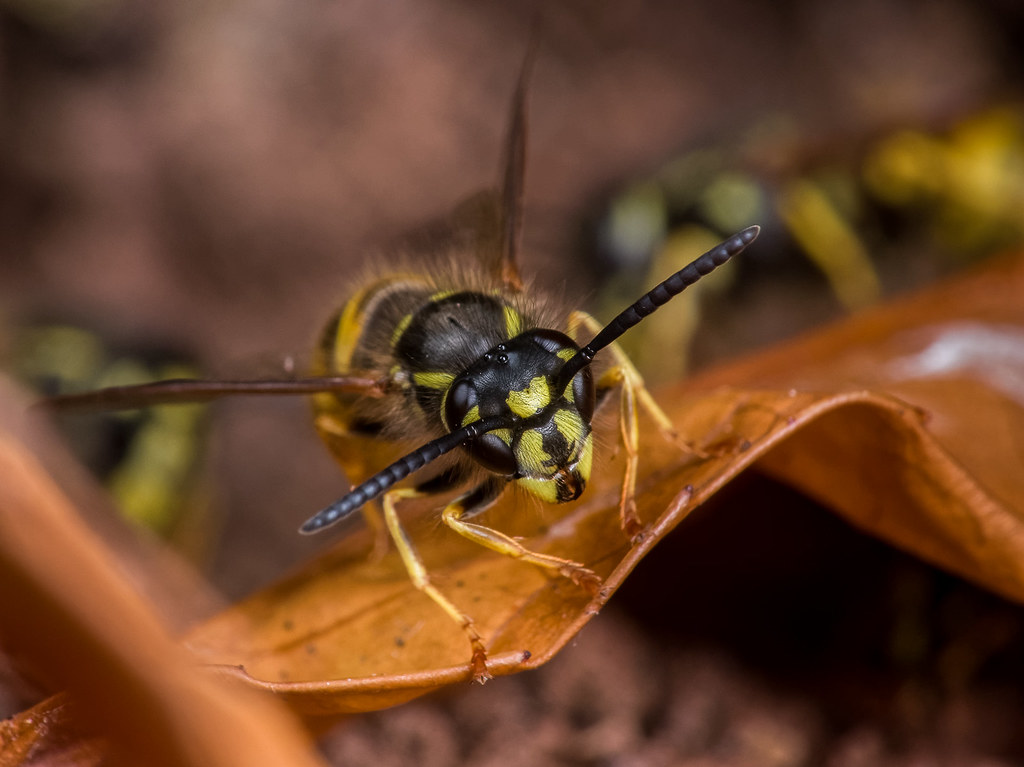
0808 12 2015_08_xx FZ200 R150 P1090703_DxO LR 1300h by gardenersassistant, on Flickr
8

0808 10 2015_08_xx G5 M200 P1060544_DxO LR 1300h by gardenersassistant, on Flickr
Continued in next post.
At +5 diopters, the Marumi 200 is almost exactly the same power as the Raynox 150 (4.8 diopters). However, the Marumi 200 has a much larger diameter than the Raynox 150, which means that it vignettes less (hardly at all in fact) at shorter focal lengths and therefore can cover a much wider range of (low) magnifications than the Raynox 150, which suffers from heavy vignetting at shorter focal lengths. This makes the Marumi 200 very attractive to me in principle, and I used it intensively for several days and confirmed that the extra range of magnifications is very useful in practice. However, I then did a controlled side by side comparison between the Marumi 200 and the Raynox 150, which showed that the Marumi 200 was significantly less sharp than the Raynox 150 and significantly more prone to chromatic aberration (for example see this post.) As a result I haven't used the Marumi 200 since then.
Still, while the Marumi 200 shots might not be as sharp as they would have been with the Raynox 150, I thought they were interesting enough to post anyway.
The Raynox 150 shots are #1, #2, #6 and #7. The Panasonic G5 shot is #8.
All of the shots used flash. Some used my pie tin flash on Metz 58-AF2 flash unit, and some were early shots using the KX800 twin flash (I don't know what diffusion arrangement I used).
All of the FZ200 shots used base ISO 100 and minimum aperture of f/8. The G5 shot used ISO 400 with minimum aperture of f/22. The reason a higher ISO was used with the G5 is that the G5, having a larger sensor than the FZ200, needs a smaller aperture to get the same depth of field, and that in turn needs more light from the flash. So to avoid excessively long recycle times with the G5 I turned up the ISO so as to reduce the output needed from the flash.
All but two of the FZ200 shots used 1/1600 sec, the other two 1/640sec (don't know why). The G5 shot used 1/160 sec, which is the max flash sync speed of the G5.
The images were (initial, batch) processed in DXO Optics Pro 10 and then (individually) processed in Lightroom 6.
As usual there are 1300 pixel high versions over at Flickr
The second post is all in-flight images.
1

0808 01 2015_08_xx FZ200 R150 P1050096_DxO LR 1300h by gardenersassistant, on Flickr
2

0808 02 2015_08_xx FZ200 R150 P1050098_DxO LR 1300h by gardenersassistant, on Flickr
3

0808 03 2015_08_xx FZ200 M200 P1060110_DxO LR 1300h by gardenersassistant, on Flickr
4

0808 05 2015_08_xx FZ200 M200 P1060095_DxO LR 1300h by gardenersassistant, on Flickr
5

0808 07 2015_08_xx FZ200 M200 P1060214_DxO LR 1300h by gardenersassistant, on Flickr
6

0808 11 2015_08_xx FZ200 R150 P1090702_DxO LR 1300h by gardenersassistant, on Flickr
7

0808 12 2015_08_xx FZ200 R150 P1090703_DxO LR 1300h by gardenersassistant, on Flickr
8

0808 10 2015_08_xx G5 M200 P1060544_DxO LR 1300h by gardenersassistant, on Flickr
Continued in next post.
Last edited:


